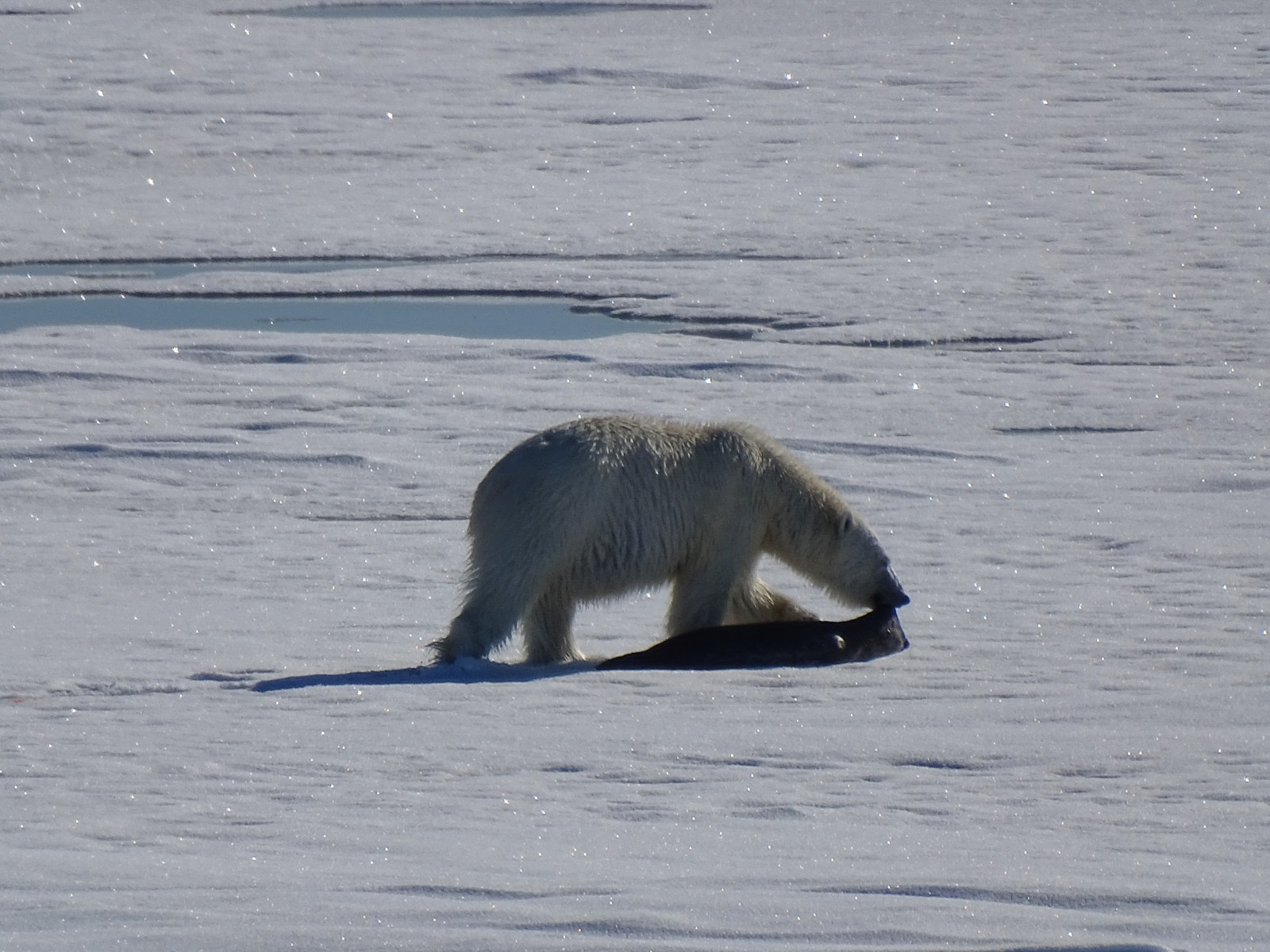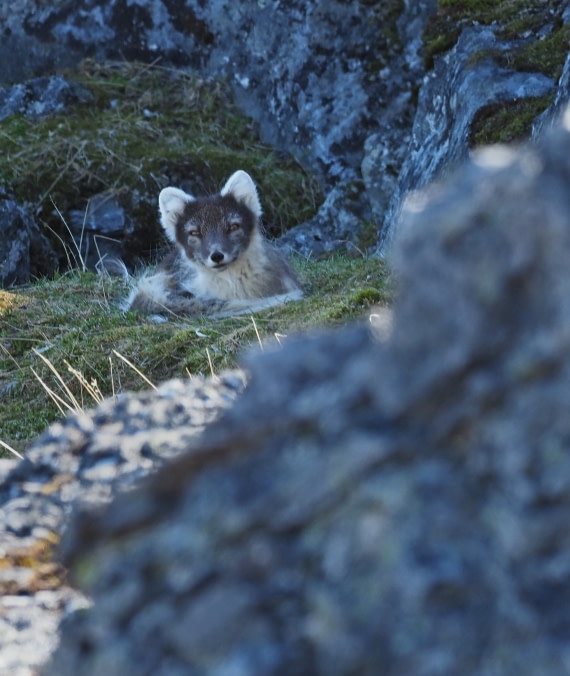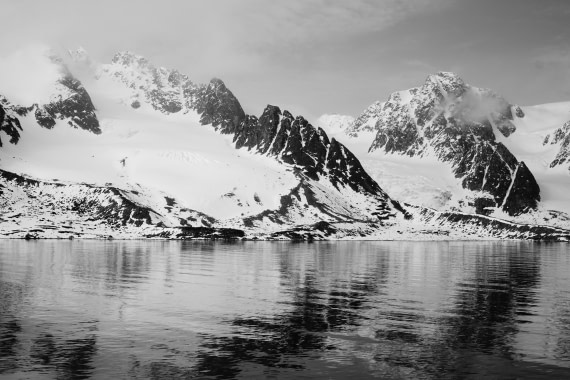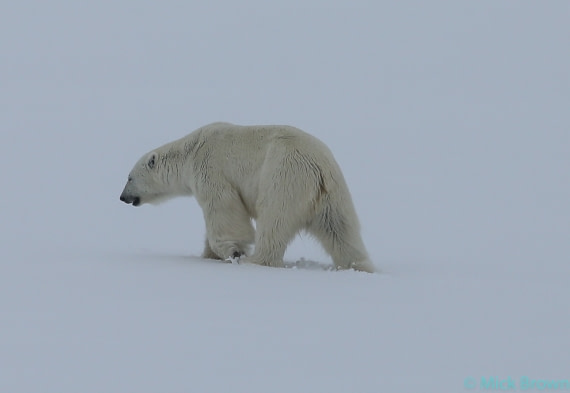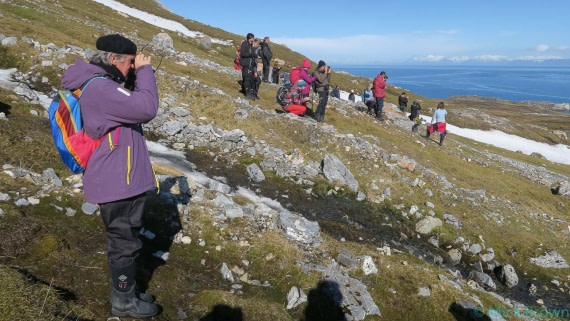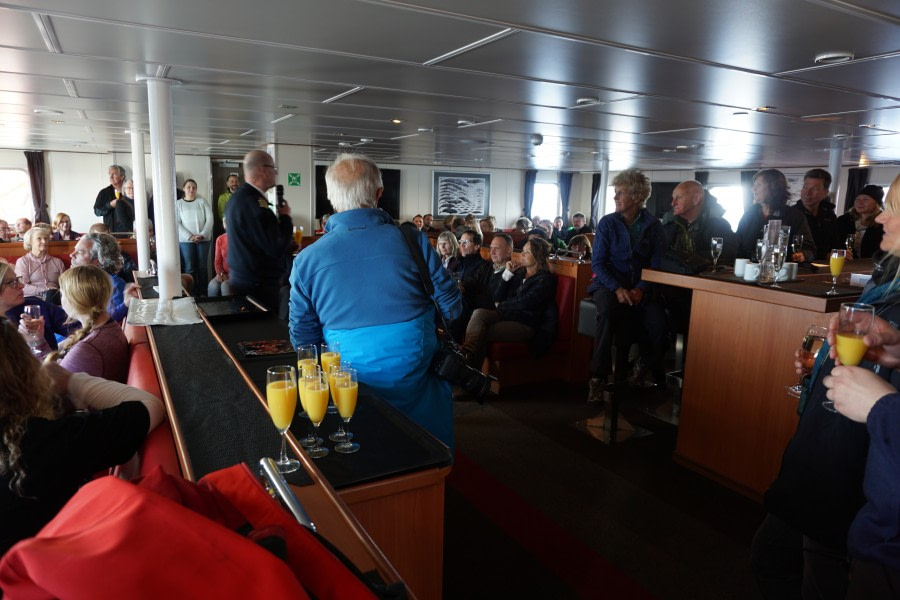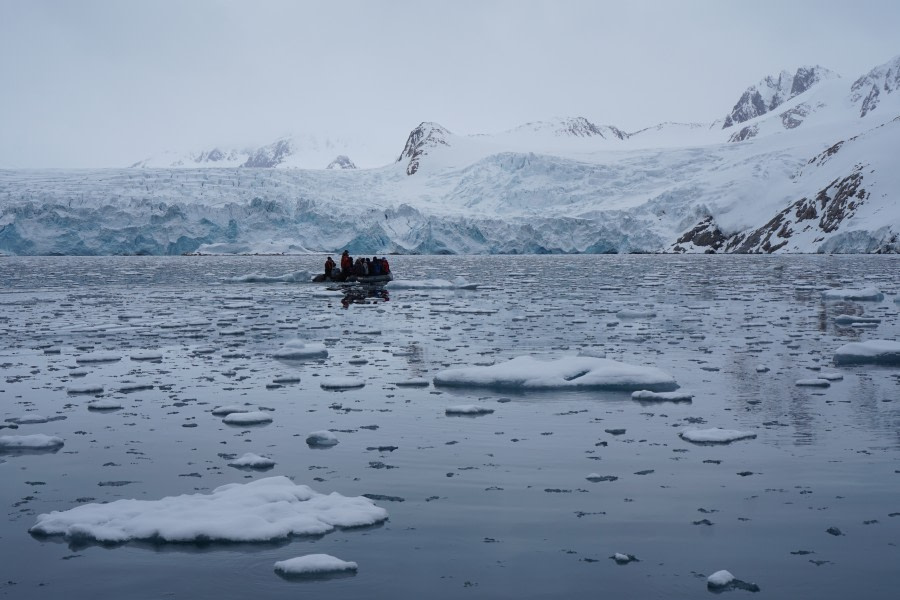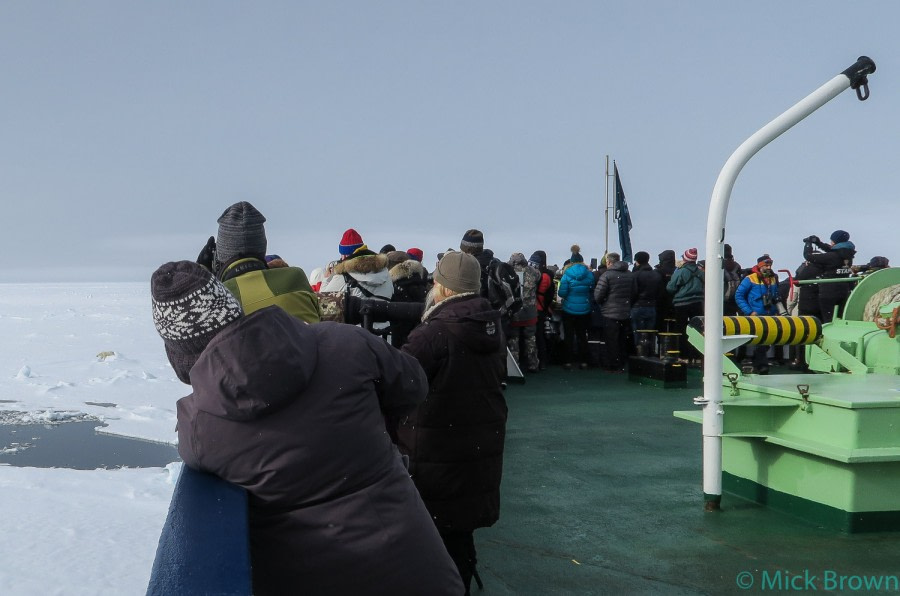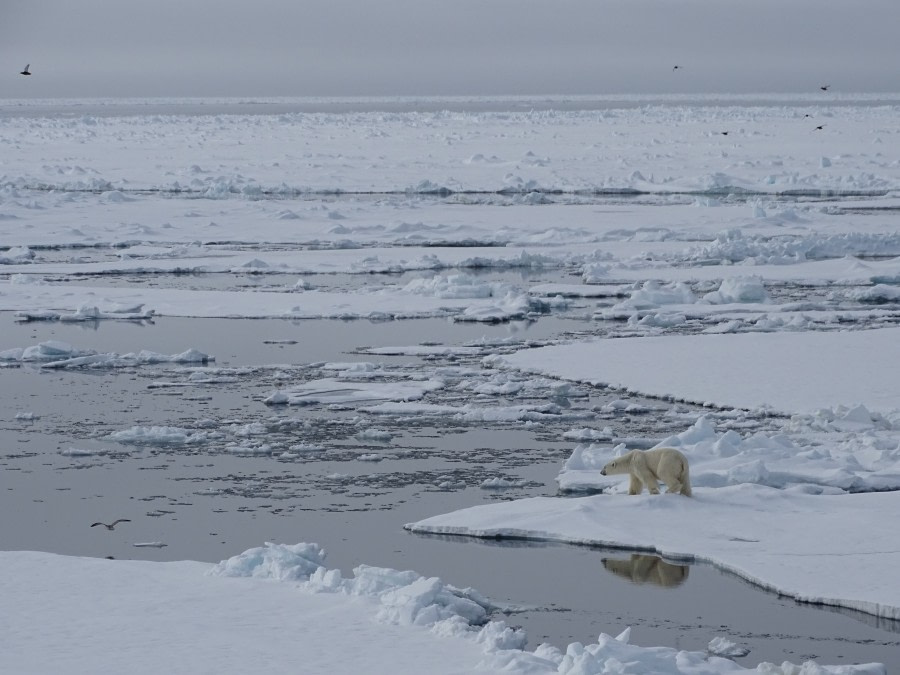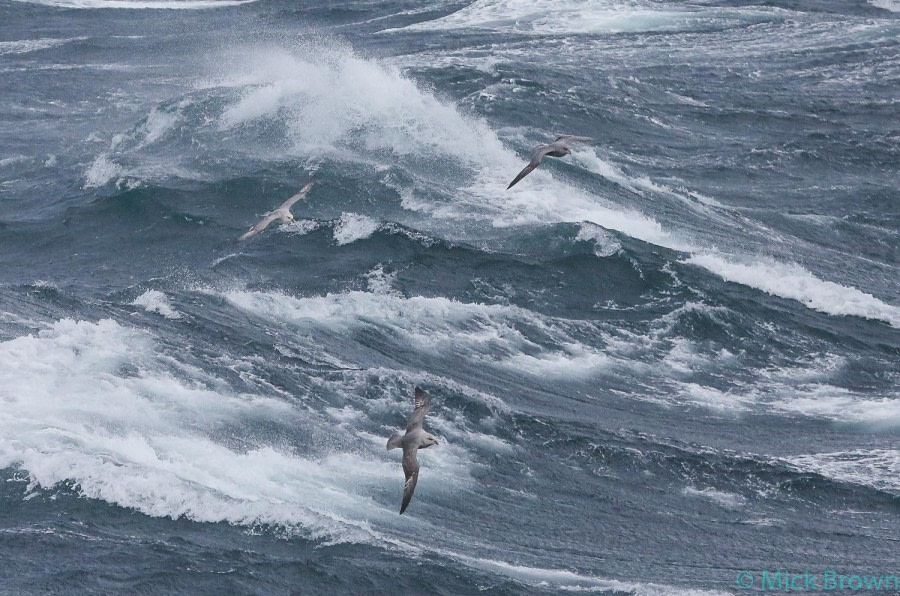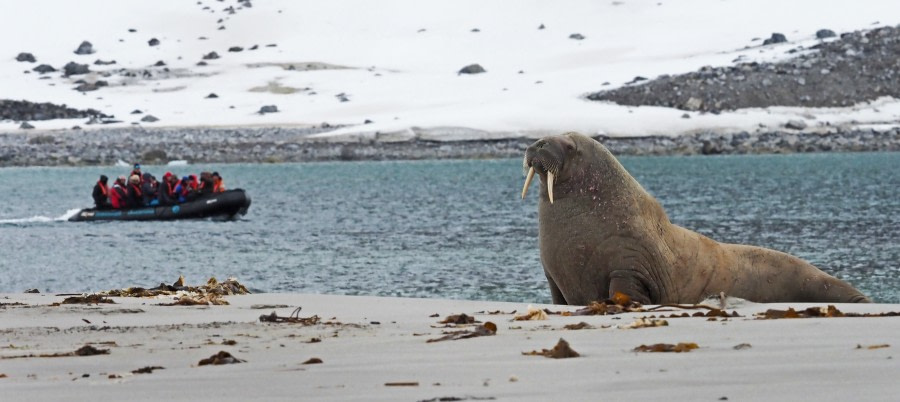| Datum: |
13.06.2018 |
| Position: |
79°36.5'N, 010°03.7'E |
| Wind: |
SW 2 |
| Wetter: |
bewölkt, später Sonnenschein |
| Lufttemperatur: |
+5 |
In der Nacht bewegten wir uns entlang der Westküste Spitzbergens und am Morgen befanden wir uns nördlich der Hauptinsel des Archipels. Nach dem Frühstück gab es die obligatorische Besprechung über das Verhalten im Land der Eisbären und wie man mit dem Zodiac an Land kommt.
Während das Expeditionspersonal uns die Gummistiefel aushändigte, segelte Ortelius in den Raudfjord (Roter Fjord) für eine geplante Anlandung, um die Möglichkeit zu haben, die Küste zu erkunden und sich die Beine ein wenig zu vertreten. Der Nebel hatte sich inzwischen gelichtet und man konnte sehen, warum der Fjord seinen Namen hat. Rotes Sedimentgestein (Old Red), das etwa 600 Millionen Jahre alt war, hauptsächlich Hämatit, war das Hauptgestein der Gegend. Gleich am Eingang des Fjords kam eine Durchsage über die Lautsprecheranlage - BELUGAS ARE AHEAD!
Diese wunderschönen kleinen Wale waren überall um uns herum, schwer zu zählen, aber es waren vielleicht etwa 50 Tiere. Wir sahen ihnen zu, wie sie in den Fjord hinein- und wieder hinausfuhren, es waren weiße, oder besser cremegelbe und graue, also erwachsene und junge Tiere. Offensichtlich genossen sie auch die schöne Landschaft des Raudfjords mit den spitzen, rot gefärbten Bergen und den Gletschern ringsum. Später segelten wir tiefer in den Fjord hinein bis zur Gletscherfront des Seitenfjords namens Ayerfjord. Auf dem Weg dorthin überprüfte Rinie die Anlandemöglichkeiten, aber es lag noch Schnee in der Landschaft, also keine Anlandung, ABER Rinie hat immer einen Plan B (und C und D....). Während der Mittagspause segelte uns der Kapitän direkt neben den Fuglefjorden mit dem riesigen Svitjodbreen im inneren Teil. Nach einer Pause wurde in einer Besprechung der neue Plan bekannt gegeben: eine Zodiacfahrt in den Fuglefjorden wartete auf uns.
An dieser Stelle entdeckte der holländische Entdecker Willem Barentsz vor etwa 400 Jahren Land und nannte es Spitzbergen. Wir fuhren mit den Zodiacs zwischen kleineren und größeren Felseninseln hindurch, auf denen verschiedene Vogelarten nisteten, unter anderem Skuas, Weißwangengänse und Küstenseeschwalben. Wir kamen Schritt für Schritt näher an die Gletscherfront heran, die wir aus der Ferne genossen. Unterwegs begegneten uns ein paar Bartrobben auf Eisschollen, schön zu beobachten, die zweitgrößten Robben hier oben in der Hocharktis. Wir alle erlebten schöne Momente im Fjord, die wir mit allen Sinnen und mit unseren Kameras festhielten. Später zurück an Bord wurde der neue Plan geschrieben und wir erfuhren, dass wir am Abend und in der Nacht weiter nach Norden fahren werden, auf der Suche nach weiteren Wildtieren.
